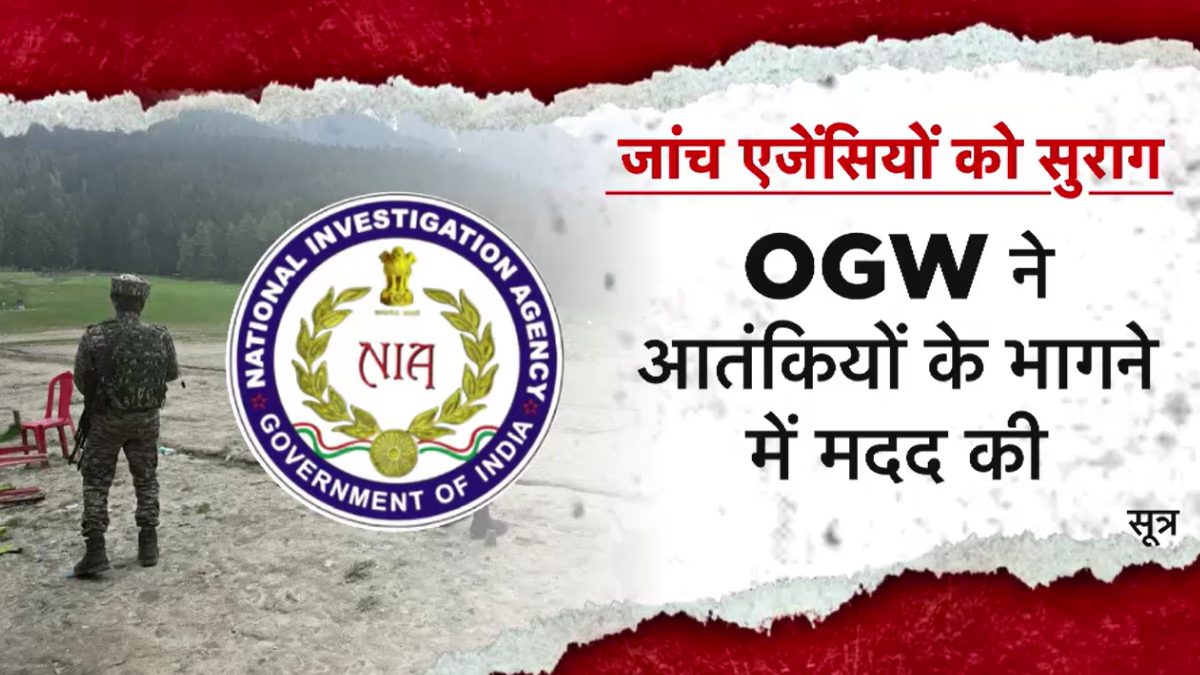It has been 10 days since the terrorist attack in Pahalgam, and tensions between India and Pakistan have escalated to a peak. Both nations have heightened their military presence, with exercises underway. Notice to Air Missions (NOTAMs) have been issued, and airspace closures are becoming frequent. Pakistan continues to assert that an attack could happen at any moment. How and when Pahalgam will teach Pakistan a lesson is for the Indian armed forces to determine. Prime Minister Modi has given the military a free hand, but where are the terrorists who are causing nations to face off on the battlefield?
Rigorous searches have continued for the past 10 days, spanning from forests to residential areas. Over 100 suspects have been interrogated, and the homes of many suspects have been demolished. Investigation agencies are on the hunt for clues. On Thursday, the Director General of the National Investigation Agency also visited Pahalgam, where a 3-hour investigation took place. However, the terrorists remain at large, as do those assisting them.

Source: aajtak
The situation instills fear among residents regarding security across Jammu and Kashmir after Pahalgam. Authorities have shut down 48 tourist destinations due to security threats. Until these terrorists are captured, their terror will persist throughout Jammu and Kashmir. The lingering question: Where have the culprits from Pahalgam gone, as 10 days have passed without any resolution?
Are the terrorists hidden in dense forests, or are they receiving help?
Such questions arise: Are these terrorists nestled within the natural caves of dense forests, or are they being assisted by overground workers living within those forests? Investigation agencies are trying to pursue both scenarios to apprehend the terrorists. The original investigation radius in the forests has expanded significantly, and another major operation aims to trace terrorist connections through overground workers. Sources indicate that these workers informed the terrorists of the attack site layout and assisted in devising their exit plans.
According to sources, investigators have intercepted ultra state signals at the time of the incident that provided mobile connectivity for audio, video calls, or SMS without a SIM card. Agencies are scrutinizing call detail records, bank accounts, and other data for information. In pursuit of overground workers, investigations have resulted in numerous raids across Jammu and Kashmir, including groups affiliated with Hurriyat and Jamaat-e-Islami.

Source: aajtak
Rapid Raids by Investigation Agencies
Security agencies in Jammu and Kashmir have advised citizens to steer clear of organizations like Ittihad-ul-Muslimeen and Awami Action Committee, implicated in anti-national activities, with evidence pointing to ongoing efforts to deploy overground workers on behalf of terrorists. Following the Pahalgam attack, approximately 100 raids were conducted across areas such as Kupwara, Handwara, Anantnag, Tral, Pulwama, Sopore, Baramulla, and Bandipora. These raids have unearthed a substantial amount of incriminating material. Despite their prohibited status, these organizations continued networking overground workers for terror operations, as evidenced by their call records.

Source: aajtak
Among the conspirators in the Pahalgam attack were three armed gunmen supported by a broad network of overground workers. Eyewitness accounts have led to increased scrutiny of others present at the scene, prompting authorities to trail their connections. NIA sources name Farooq Ahmed, a top commander with Lashkar, who orchestrated Pahalgam's attack through his overground network from his hideout in Pakistan-administered Kashmir. Despite his residence being demolished in Kupwara, the investigation continues to search vigorously for a definite lead to capture the terrorists. Concerns mount as it remains uncertain if they are well supplied or if their overground associates are supplying them.




